+86 311 85258258
+86 311 85258258
Investment casting is one of the oldest manufacturing processes, dating back thousands of years, in which molten metal is poured into an expendable ceramic mold. The mold is formed by using a wax pattern - a disposable piece in the shape of the desired part. The pattern is surrounded, or "invested", into ceramic slurry that hardens into the mold. Investment casting is often referred to as "lost-wax casting" because the wax pattern is melted out of the mold after it has been formed. Lox-wax processes are one-to-one (one pattern creates one part), which increases production time and costs relative to other casting processes. However, since the mold is destroyed during the process, parts with complex geometries and intricate details can be created. Investment casting can make use of most metals, most commonly using aluminum alloys, bronze alloys, magnesium alloys, cast iron, stainless steel, and tool steel. This process is beneficial for casting metals with high melting temperatures that can not be molded in plaster or metal. Parts that are typically made by investment casting include those with complex geometry such as turbine blades or firearm components. High temperature applications are also common, which includes parts for the automotive, aircraft, and military industries.
Investment casting requires the use of a metal die, wax, ceramic slurry, furnace, molten metal, and any machines needed for sandblasting, cutting, or grinding. The process steps include the following:
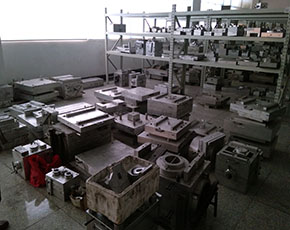
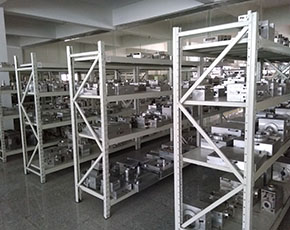
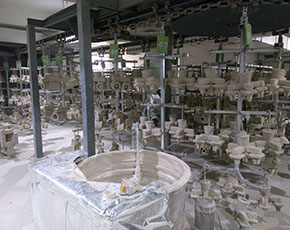
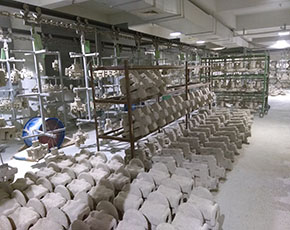
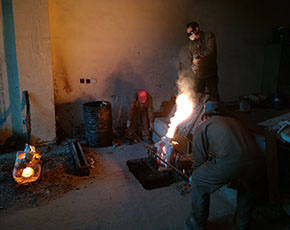
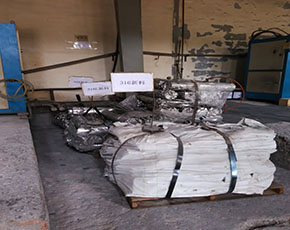
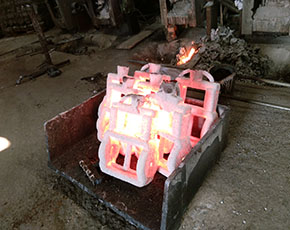
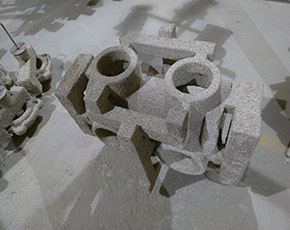
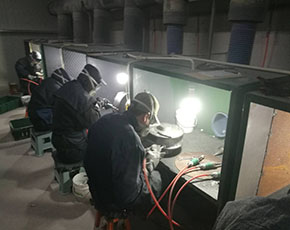
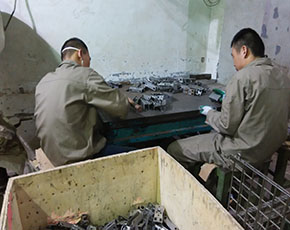
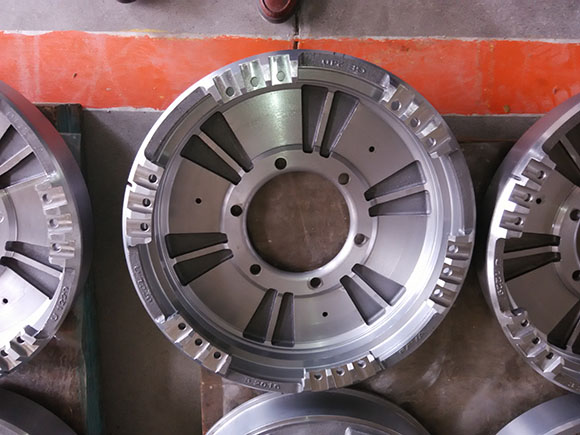
Often times, finishing operations such as grinding or sandblasting are used to smooth the part at the gates. Heat treatment is also sometimes used to harden the final part.
Size range.
Although most investment mold castings are small, the investment mold process can produce castings weighing in excess of 1,000 pounds. This capability is limited to a relatively small number of investment casters and requires special handling expertise. Most castings weigh between ounces and 20 pounds.
Versatile and complex shapes.
Investment casting provides consistent and repeatable close tolerances as well as complex channels and contours. Many of these configurations are not possible to produce. For example, where machine tools cannot reach. Achieving net-formed or near-net-formed cast parts can significantly reduce post-casting machining costs.
Investment casting is a good alternative to welded parts or fabrication. Many components can be combined into one casting. The more they are combined, the more efficient the manufacturing. Converting a multi-piece assembly to a single investment casting often provides greater dimensional accuracy and reduces part complexity.
Precise and smooth surfaces.
The ceramic shell used is built around a smooth pattern created by injecting wax into a polished aluminum mold.125 Micro finishes are standard, and even finer finishes are not uncommon.
Investment casting does not include parting lines, since only one mold is used instead of two half-molds (e.g. in the case of sand casting). The criteria for surface imperfections and cosmetics are discussed and agreed with the customer according to the function.
Dimensional accuracy.
Typically, the "standard" investment tolerance is +/-0.010" for the first inch and +/- 0.004" for each subsequent inch.
Design stage drawings can reduce or even eliminate previous machining requirements to produce the same part.
The cost of any part is directly proportional to the accuracy of its dimensional requirements. Whether the part is a cast machined part or manufactured. Careful design review will allow modifications to tolerances, undercuts, blind holes, etc. to achieve higher yields and lower part costs. If tighter tolerances than castings are required, investment casting will require less machining than traditional castings or fabricated parts.
Quality and Integrity.
Casting integrity is an important feature of the process. Investment casting has a long history in demanding industries such as gas turbine engines, petroleum, chemical, defense and medical.
Processing costs.
For low volume requirements, it can be more expensive than other methods if permanent tooling is pursued. For these applications, SLA or printed patterns may be a cost effective alternative (even in large quantities).
Initial cost is another key factor in determining whether investment casting delivers the most value. Investment casting tools are often assembled from multiple components to produce complex parts. This "front-end" cost is not insignificant, but can be easily offset by the lack of subsequent machining and/or fabrication.
Size limitations.
Melt mold castings can be made in a variety of sizes. There is an upper limit to this range, which is smaller than other molding techniques such as sand casting.
Very small structures.
Investment casting is an excellent choice for thin-walled applications, but very small internal shapes using cores can present challenges. Holes typically cannot be smaller than 1/16 inch (1.6 mm) in diameter or deeper than 1.5 times.
Timing.
The multi-step investment casting process is more time consuming than other processes. Processing times may be shorter than other alternatives.
Industrial casting was first mentioned by the monk Theophilus Presbyter around 1100 AD. However, we are pretty sure that investment casting started more than 5000 years ago. The earliest examples we have of investment casting come from ancient civilizations such as Harappa, Aztec, Mayan Mexico, the Benin civilization in Africa, Mesopotamia and ancient Egypt. In fact, molten castings have been found in the tombs of King Tutankhamun.
The first molten castings were wax molds made from clay molds and natural honeycomb or beeswax. To make them, bellows were manually operated as furnaces. In the 1800s, dentists began using investment casting to make fillings and crowns. During World War II, manufacturers began to invest in casting metal alloy parts, precision net-shape and near-net-shape manufacturing.
Today, manufacturers make molds from a variety of alloys and refractory materials and use wax molds formed from a mixture of pure and synthetic waxes. Instead of hand-held bellows, they cast them in a foundry.
For many years, Zen Young Foundry has been providing customized metal casting services for various industries and project types.
Mining Engineering Machinery Casting Parts
If you are looking for a solution that fits your custom metal Sand casting project, Zen Young can help you produce perfect metal parts through a reliable casting process.
We always welcome special material and difficult parts and would like to help our comstomers utmost.
Investment casting is one of the traditional casting methods. That is, the metal is heated to the temperature of the molten liquid, and then the material is poured into a mold designed with a suitable negative space and gated to effectively completely fill the molten metal. Once the metal has cooled and solidified, the metal part can be removed from the mold for finishing. Investment casting, also known as lost wax casting, is usually used to make jewelry and metal parts with complex shapes.
The material used to make molds for sand casting is sand, not ceramics. Due to the roughness of sand, sand casting is most commonly used for large castings, which usually require less detail precision and tolerances.
Die casting is a kind of metal casting process, which is characterized by forcing molten metal under high pressure into the forming cavity. The cavity is made using two hardened tool steel molds, which have been processed into a certain shape, and die casting works similarly to injection molds.
We will choose different casting methods for processing according to the product shape, material and your working conditions. Many years of processing experience can guarantee the quality of the casting parts.
we Work with your customers to design patterns and molding methods for each custom casting. Request a quote for more information on how our casting services can meet your project requirements.